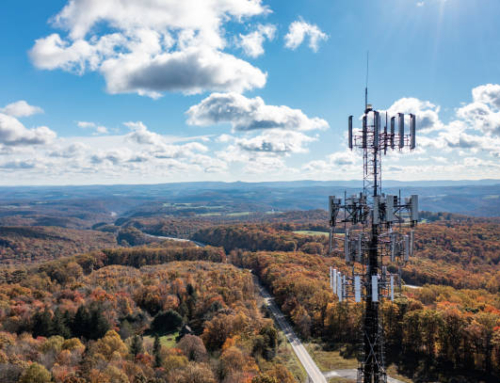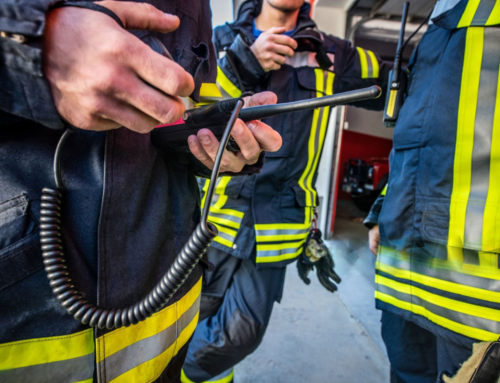Meeting the Critical Needs of Students, Staff, and Public Safety
Why This Matters
College and university campuses today are more connected than ever. Between students, faculty, staff, and visitors, thousands of people rely on reliable communication every day—whether it’s to learn, teach, work, or respond to emergencies. Campuses have become complex environments where digital learning, mobile connectivity, and public safety all depend on strong communication infrastructure.
To support these needs, every institution should be thinking about four critical technology areas:
- Cellular Coverage (DAS)
- Public Safety Radio Systems (ERRCS/ERCES)
- Reliable Campus Wi-Fi (Wi-Fi 7)
- Private 5G Networks for Specialized Applications
1. Cellular DAS – Making Sure Everyone Has Signal
A Distributed Antenna System (DAS) helps extend and strengthen cellular signals across campus, especially inside buildings where coverage can drop off. This is key not just for convenience, but for safety—students, faculty, and visitors should be able to make calls or use apps anywhere they go.
Where it’s needed:
- Dorms, classrooms, and libraries
- Stadiums and event spaces
- Basements, parking garages, and elevators
- Security offices and operations centers
Why it’s important:
- Helps ensure 911 calls go through
- Keeps people connected in high-traffic areas
- Supports all major carriers (AT&T, Verizon, T-Mobile)
- Reduces dropped calls and frustration across campus
2. Public Safety Radio Systems – Keeping First Responders Connected
ERRCS (Emergency Responder Radio Communication Systems) are designed to make sure police, fire, and EMS teams can stay in contact while inside campus buildings. In many cities, these systems aren’t optional—they’re required by code.
Where it’s required:
- Any large or multi-level building
- Student housing and research facilities
- Stairwells, basements, tunnels, and garages
- Any building where your local fire department says radio coverage is needed
Why it’s important:
- Required by building and fire codes in most areas
- First responders rely on radios—not cell phones—during emergencies
- Helps meet inspection requirements for Certificates of Occupancy
- Can make a difference in how quickly help arrives
3. Campus Wi-Fi – Powered by Wi-Fi 7
Wi-Fi has become one of the most important utilities on campus. With the shift to digital learning, high-definition streaming, virtual labs, and smart devices everywhere, older Wi-Fi networks just can’t keep up. That’s why colleges and universities are now turning to Wi-Fi 7—the latest and most advanced wireless technology available.
Where it’s needed:
- Classrooms, lecture halls, and libraries
- Student housing, lounges, and dorm rooms
- Outdoor study areas, courtyards, and transit stops
- Cafeterias, student centers, and testing facilities
Why Wi-Fi 7 makes a difference:
- Faster speeds for streaming lectures, running simulations, or downloading large files
- Lower latency, which means smoother video calls, quicker app responses, and better performance for real-time tools
- Improved capacity, so more devices can connect at once without slowing down the network—a must in BYOD environments
- Better efficiency in dense environments like lecture halls or residence halls
- Built to support AR/VR, smart classrooms, and connected campus devices
- Stronger security features to protect student data and institutional systems
Wi-Fi 7 helps future-proof your campus while delivering a better experience for students, faculty, and visitors right now. Whether you’re building new or upgrading older networks, it’s the clear next step in wireless.
4. Private 5G – For What Comes Next
Private 5G gives your institution its own secure, high-speed wireless network. It’s not meant to replace Wi-Fi—it works alongside it to support advanced campus operations, research, and emerging technologies.
Where it’s useful:
- Research labs and innovation centers
- Smart campus systems: lighting, HVAC, surveillance, sensors
- Streaming from media production facilities
- Connected classrooms using AR/VR or robotics
Why it’s important:
- Offers more control and security than public networks
- Supports low-latency, high-bandwidth applications
- Prepares your campus for what’s coming next in tech
- Reduces pressure on the campus Wi-Fi system
Tying It All Together – Planning for the Long Run
Each of these systems plays a different role, but they all rely on the same foundation: a well-planned and properly built infrastructure.
Here’s what that means in practice:
- A solid fiber and structured cabling system to carry the data, power, and connectivity required for all technologies
- Planned bandwidth from your internet providers, with enough headroom to handle peak demand
- Redundant ISP connections, so a service outage doesn’t bring down the campus
- Use of professional design tools like iBwave for cellular DAS and public safety radio coverage, and Ekahau for precise Wi-Fi 7 planning and performance testing
The earlier these elements are planned, the better the outcome. Trying to fix coverage gaps or capacity issues after the fact is almost always more expensive and less effective.
How Repeated Signal Solutions Can Help
At Repeated Signal Solutions, we’ve been helping colleges and universities design and implement wireless infrastructure for over 20 years. We understand the regulatory landscape, the technology options, and the challenges that campuses face when it comes to safety and connectivity.
We specialize in:
- Engineering and installing carrier-approved DAS and AHJ approved public safety systems
- Deploying high-performance Wi-Fi 7 networks across academic and residential spaces
- Delivering Private 5G solutions for research and smart campus applications
- Designing the fiber backbone, bandwidth planning, and redundancy to support it all
Whether you’re upgrading existing systems or building new, we’re here to guide you through every step—no guesswork, no wasted time, just smart solutions that work.
Let’s Talk
Ready to explore what’s possible? We’re happy to walk the campus, assess your current setup, or help map out what’s next.
Let’s build a smarter, safer campus—together.
Click here to schedule a consultation with our team.






